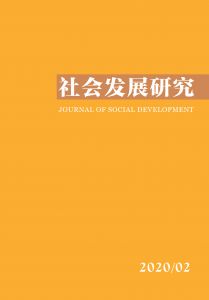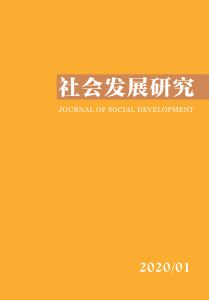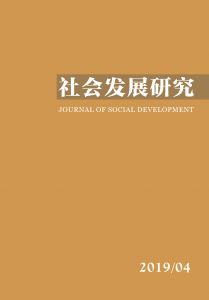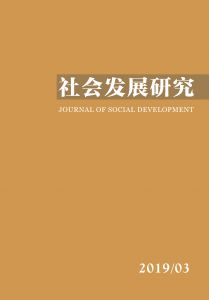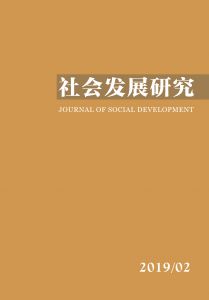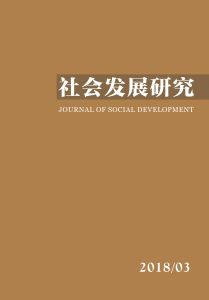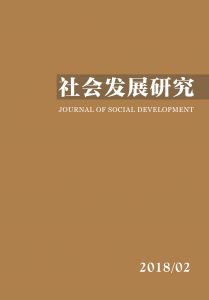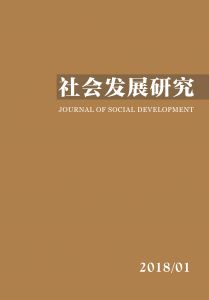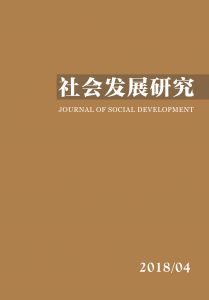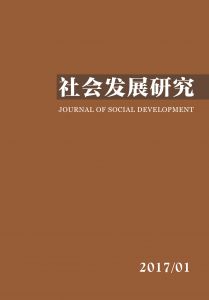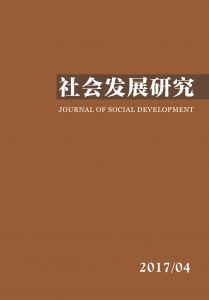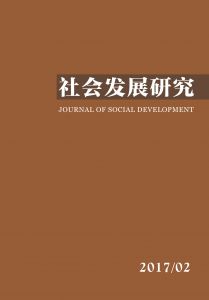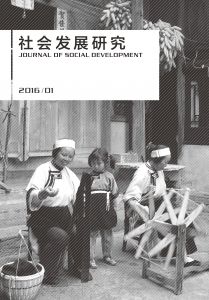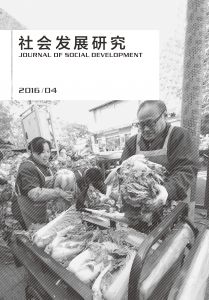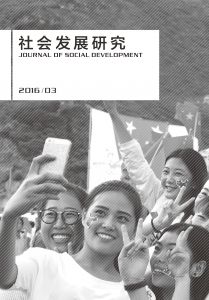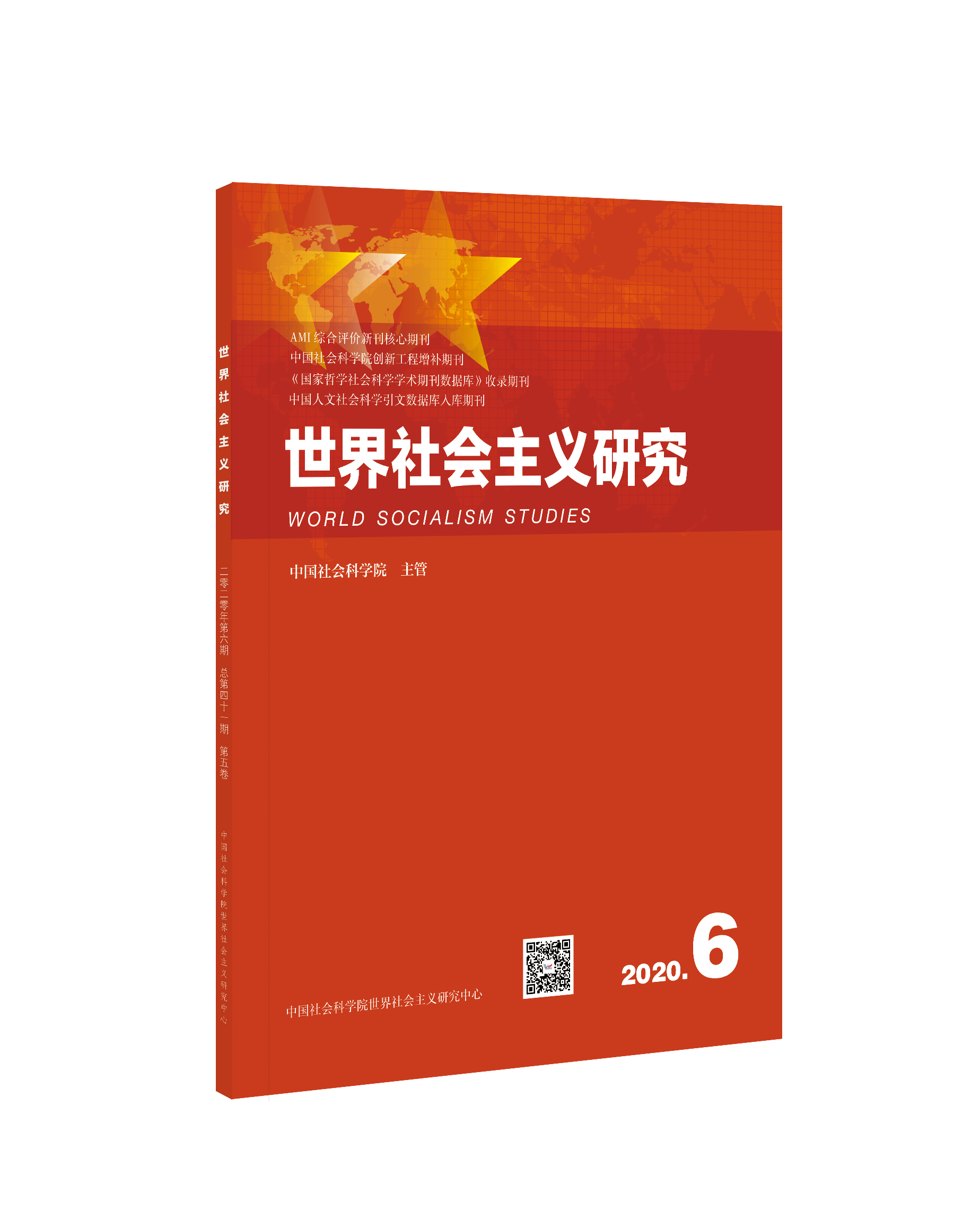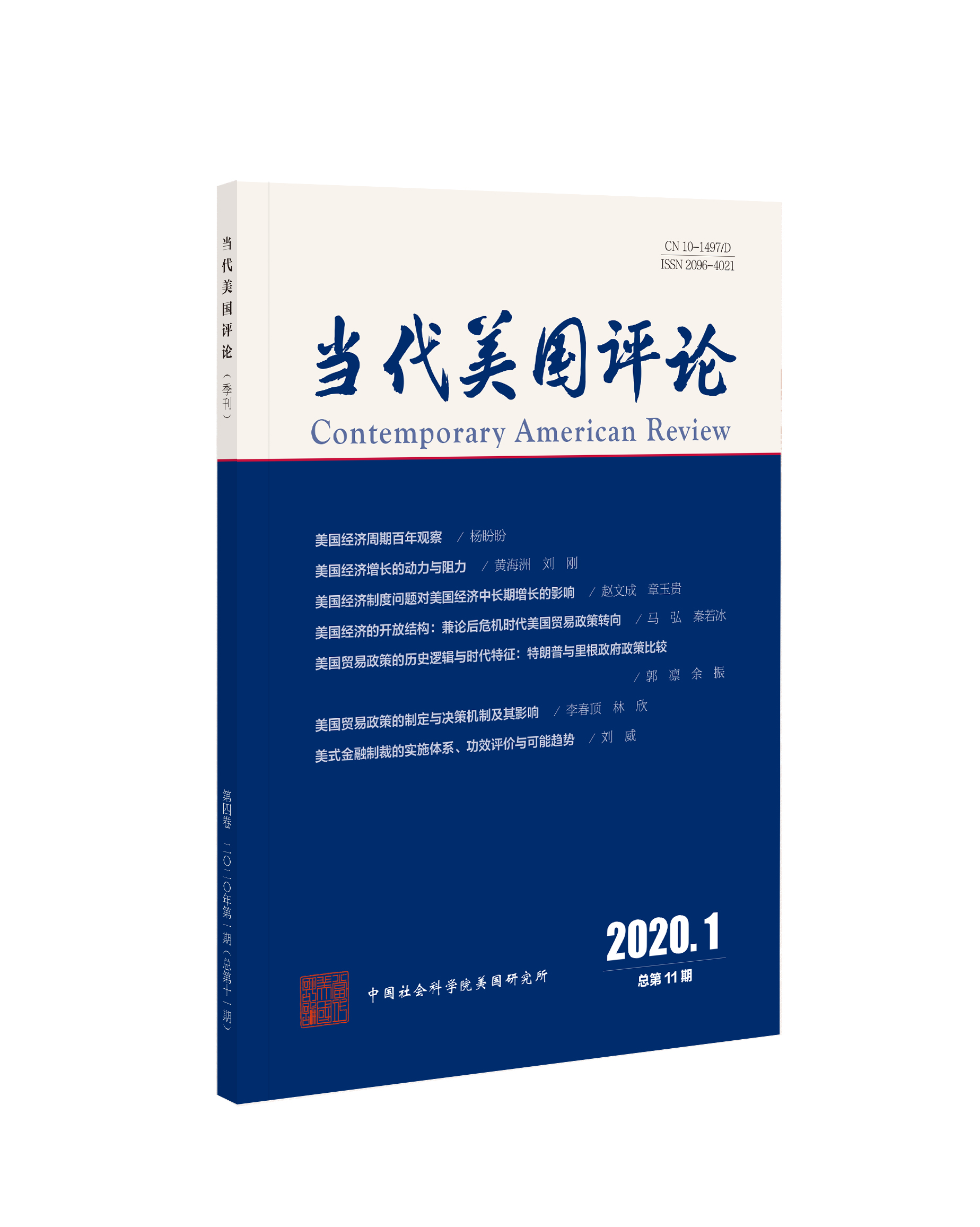最新期刊
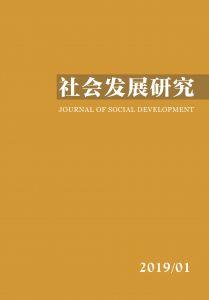
目录
过往期刊
参考文献
-
编委会
-
·马克思主义学习与研究专栏· “中国人口发展形势”笔谈
-
中国人口发展的新形势与新变化研究
-
人口负增长时代:特征、风险及其应对策略
-
中国东部三大城市群人口城市化对产业结构转型影响的研究
-
-
特邀栏目:教育与青少年发展
-
情感投入还是经济支持:对家庭教育投资的实证分析
-
爸爸去哪儿?父亲育儿投入及其对中国青少年发展的影响
-
子承父志
-
校园欺凌与青少年的一般信任
-
-
·论文·
-
治理如何“运动”起来?
-
“世界工厂”模式的终结?
-
“索我理想之中华”:近代中国的历史转型与反思
-
病有所医,老有所养
-
主观阶层、流动感知与社会参与意愿
-
阶层教养方式述评:拉鲁框架与中国社会
-
-
英文目录及摘要
-
稿约
-
版权页
按年份浏览:
- 全部
- 2020
- 2019
- 2018
- 2017
- 2016
- 2015
- 2014
[1][1]陈卫,2015,《基于广义稳定人口模型的中国生育率估计》,《人口研究》第6期。
[2][2]陈卫,2016,《广义稳定人口模型与中国人口估计》,《人口学刊》第1期。
[3][3]陈卫、杨胜慧,2014,《中国2010年总和生育率的再估计》,《人口研究》第6期。
[4][4]崔红艳、徐岚、李睿,2013,《对2010年人口普查数据准确性的估计》,《人口研究》第1期。
[5][5]贺丹、张许颖、庄亚儿、王志理、杨胜慧,2018,《2006—2016年中国生育状况报告——基于2017年全国生育状况抽样调查数据分析》,《人口研究》第6期。
[6][6]郭志刚,2004,《关于生育政策调整的人口模拟方法探讨》,《中国人口科学》第2期。
[7][7]郭志刚,2011,《六普结果表明以往人口估计和预测严重失误》,《中国人口科学》第6期。
[8][8]郭志刚,2013,《中国人口生育水平低在何处——基于六普数据的分析》,《中国人口科学》第2期。
[9][9]马瀛通,2010,《数理统计分析人口学》,北京:中国人口出版社。
[10][10]王广州,2002,《年龄别生育率与总和生育率间接估计方法与应用研究》,《中国人口科学》第3期。
[11][11]王广州,2003,《对第五次人口普查数据重报问题的分析》,《中国人口科学》第1期。
[12][12]王广州,2012,《“单独”育龄妇女总量、结构及变动趋势研究》,《中国人口科学》第3期。
[13][13]王广州,2015,《生育政策调整研究中存在的问题与反思》,《中国人口科学》第2期。
[14][14]王广州,2017,《中国低生育水平下的二孩生育意愿研究》,《青年探索》第5期。
[15][15]王广州,2018,《中国人口预测方法及未来人口政策》,《财经智库》第3期。
[16][16]王广州、胡耀岭、张丽萍,2013,《中国生育政策调整》,北京:社会科学文献出版社。
[17][17]王广州、张丽萍,2012,《到底能生多少孩子?——中国人的政策生育潜力估计》,《社会学研究》第5期。
[18][18]王军、王广州,2016,《中国低生育水平下的二孩生育意愿与生育行为差异研究》,《人口学刊》第2期。
[19][19]王培安主编,2016,《实施全面两孩政策人口变动测算研究》,北京:中国人口出版社。
[20][20]杨凡、赵梦晗,2013,《2000年以来中国人口生育水平的估计》,《人口研究》第2期。
[21][21]易富贤,2017,《中国到底有多少人口?》《中国经济报告》第10期。
[22][22]翟振武、陈佳鞠、李龙,2015,《现阶段中国的总和生育率究竟是多少?李龙来自户籍登记数据的新证据》,《人口研究》第6期。
[23][23]翟振武,2017,《2015—2100年中国人口与老龄化变动趋势》,《人口研究》第4期。
[24][24]翟振武、李龙、陈佳鞠,2016,《全面两孩政策下的目标人群及新增出生人口估计》,《人口研究》第4期。
[25][25]翟振武、张现苓、靳永爱,2014,《立即全面放开二胎政策的人口学后果分析》,《人口研究》第2期。
[26][26]张车伟主编,2018,《人口与劳动绿皮书:中国人口与劳动问题报告No.19》,北京:社会科学文献出版社。
[27][27]张广宇、原新,2004,《对1990年代出生漏报和生育水平估计问题的思考》,《人口研究》第2期。
[28][28]张丽萍、王广州,2015,《中国育龄人群二孩生育意愿与生育计划研究》,《人口与经济》第6期。
[29][29]赵梦晗,2015,《2000—2010年中国生育水平估计》,《人口研究》第5期。
[30][30]陈卫,2014,《2000年以来中国生育水平评估》,《学海》第1期。
[31][31]陈卫、杨胜慧,2014,《中国2010年总和生育率的再估计》,《人口研究》第6期。
[32][32]陈友华、胡小武,2011,《低生育率是中国的福音?——从第六次人口普查数据看中国人口发展现状与前景》,《南京社会科学》第8期。
[33][33]崔红艳、徐岚、李睿,2013,《对2010年人口普查数据准确性的估计》,《人口研究》第1期。
[34][34]定军、王雅靖,2018,《育龄妇女减约700万人各地统计局摸底生育情况》,《21世纪经济报道》7月25日08版。
[35][35]顾宝昌,1994,《从上海看人口负增长》,《中国人口科学》第6期。
[36][36]郭志刚,2011,《六普结果表明以往人口估计和预测严重失误》,《中国人口科学》第6期。
[37][37]郝娟、邱长溶,2011,《2000年以来中国城乡生育水平的比较分析》,《南方人口》第5期。
[38][38]李汉东、李流,2012,《中国2000年以来生育水平估计》,《中国人口科学》第5期。
[39][39]茅倬彦、申小菊、张闻雷,2018,《人口惯性和生育政策选择:国际比较及启示》,《南方人口》第2期。
[40][40]穆光宗,2013,《正视超低生育率的危险》,《中国经济报告》第12期。
[41][41]王丰、郭志刚、茅倬彦,2008,《21世纪中国人口负增长惯性初探》,《人口研究》第6期。
[42][42]王金营、戈艳霞,2013,《2010年人口普查数据质量评估以及对以往人口变动分析校正》,《人口研究》第1期。
[43][43]杨凡、赵梦晗,2013,《2000年以来中国人口生育水平的估计》,《人口研究》第2期。
[44][44]翟振武、陈佳鞠、李龙,2015,《现阶段中国的总和生育率究竟是多少?——来自户籍登记数据的新证据》,《人口研究》第6期。
[45][45]张车伟主编,2018,《中国人口与劳动问题报告:中国人口与劳动经济40年:回顾与展望》,北京:社会科学文献出版社。
[46][46]赵梦晗,2015,《2000—2010年中国生育水平估计》,《人口研究》第5期。
[47][47]朱勤,2012,《2000—2010年中国生育水平推算——基于“六普”数据的初步研究》,《中国人口科学》第4期。
[48][48]左学金,2012,《21世纪中国人口再展望》,《北京大学学报》(哲学社会科学版)第5期。
[49][49]Lutz,Wolfgang,Brian C. O’ Neill & Sergei Scherbov 2003,“Europe’s Population at A Turning Point” Science (299).
[50][50]巴顿,1984,《城市经济学:理论和政策》,上海社会科学院部门经济研究所城市经济研究室译,北京:商务印书馆。
[51][51]干春晖、余典范,2003,《城市化与产业结构的战略性调整和升级》,《上海财经大学学报》第4期。
[52][52]何景熙、何懿,2013,《产业-就业结构变动与中国城市化发展趋势》,《中国人口》第6期。
[53][53]黄向梅、夏海勇,2012,《人口城市化与经济增长、产业结构间的动态关系——以江苏省为例》,《城市问题》第5期。
[54][54]纪韶、朱志胜,2014,《中国城市群人口流动与区域经济发展平衡性研究》,《经济理论与经济管理》第2期。
[55][55]库兹涅兹,1989,《现代经济增长》,戴睿、易诚译,北京:经济学院出版社。
[56][56]蓝庆新、陈超凡,2013,《新型城市化推动产业结构升级了吗?》,《当代社科视野》第12期。
[57][57]李诚固、韩守庆、郑文升,2004,《城市产业结构升级的城市化响应研究》,《城市规划》第4期。
[58][58]李铁立、李诚固,2003,《区域产业结构演变的城市化响应及反馈机制》,《城市问题》第5期。
[59][59]李志翠、朱琳、张学东,2013,《产业结构升级对中国城市化进程的影响——基于1978—2010年数据的检验》,《城市发展研究》第10期。
[60][60]刘永萍、王学渊,2014,《城市化与产业结构升级协调发展研究》,《齐鲁学刊》第2期。
[61][61]马红旗、陈仲常,2012,《我国省际流动人口的特征——基于全国第六次人口普查数据》,《人口研究》第6期。
[62][62]牛婷、李斌、任保平,2014,《我国城市化与产业结构及其优化的互动关系研究》,《统计与决策》第1期。
[63][63]钱纳里 H.、M.赛尔昆,1988,《发展的型式》,李新华译,北京:经济科学出版社。
[64][64]钱纳里 H.、S.鲁滨逊、M.赛尔昆,1989,《工业化和经济增长的比较研究》,吴奇、王松宝译,上海:三联书店。
[65][65]沈正平,2013,《优化产业结构与提升城市化质量的互动机制及实现途径》,《城市发展研究》第5期。
[66][66]王桂新,2012,《城市化基本理论与中国城市化的问题及对策》,《人口研究》第6期。
[67][67]王桂新、潘泽瀚、陆燕秋,2012,《中国省际人口迁移区域模式变化及其影响因素——基于2000和2010年人口普查资料的分析》,《中国人口科学》第5期。
[68][68]王立新,2014,《经济增长、产业结构与城市化——基于省级面板数据的实证研究》,《财经论丛》第4期。
[69][69]吴福象、沈浩平,2013,《新型城市化、基础设施空间溢出与地区产业结构升级——基于长三角城市群16个核心城市的实证分析》,《财经科学》第7期。
[70][70]武春友、梁潇、房士吉,2010,《城市化对产业结构演进的作用机理研究——基于中国省际面板数据的实证》,《中国软科学》第2期。
[71][71]曾昭法、左杰,2013,《中国省域城市化的空间集聚与驱动机制研究——基于空间面板数据模型》,《中国管理科学》第2期。
[72][72]Frank,Mark W. 2005,“Income Inequality and Economic Growth in the U.S.:A Panel Cointegration Approach”,working paper series,Sam Houston State University.
[73][73]Northam,Ray. M. 1979,Urban Geography . 2nd ed. New York:John Wiley & Sons.
[74][74]Theil,H,1967,Economics and Information Theory . Chicago:Rand McNally and Company.
[75][75]方长春、风笑天,2008,《家庭背景与学业成就——义务教育中的阶层差异研究》,《浙江社会科学》第8期。
[76][76]胡浩、施雨岑、李亚红,2017,《是补短板还是添负担?——两会代表委员“把脉”课外辅导热》,新华网(http://www.xinhuanet.com/politics/2017lh/2017-03/06/c_1120578884.htm)。
[77][77]黄亮,2016,《家长参与学校教育对初中学生认知能力表现影响的实证研究——基于中国教育追踪调查基线数据的分析》,《教育科学研究》第12期。
[78][78]科尔曼,詹姆斯,2009,《教育机会均等的观念》,张人杰主编,《国外教育社会学基本文选》,上海:华东师范大学出版社。
[79][79]拉鲁,2010,《不平等的童年》,张旭译,北京:北京大学出版社。
[80][80]李丽,2004,《家长参与及其与学生学习动机、学业成绩的关系研究》,山东师范大学硕士学位论文。
[81][81]李丽、赵文龙,2017,《家庭背景、文化资本对认知能力和非认知能力的影响研究》,《东岳论丛》第4期。
[82][82]李佳丽,2017,《家长参与和代际闭合对初中生认知能力的影响——基于科尔曼社会资本理论的分析》,《教育发展研究》第Z2期。
[83][83]李燕芳、吕莹,2013,《家庭教育投入对儿童早期学业能力的影响:学习品质的中介作用》,《中国特殊教育》第9期。
[84][84]梁琦,2012,《义务教育阶段家庭教育投资对子女成绩影响的实证研究》,清华大学硕士学位论文。
[85][85]梁文艳、叶晓梅、李涛,2018,《父母参与如何影响流动儿童认知能力——基于CEPS基线数据的实证研究》,《教育学报》第1期。
[86][86]梁玉成、周文,2014,《劳动参与过程的社会学研究》,《中山大学学报》(社会科学版)第4期。
[87][87]刘保中,2017,《我国城乡家庭教育投入状况的比较研究——基于CFPS(2014)数据的实证分析》,《中国青年研究》第12期。
[88][88]刘精明,2014,《能力与出身:高等教育入学机会分配的机制分析》,《中国社会科学》第8期。
[89][89]钱珍,2008,《初中生父母教养方式、学业归因、学业自我效能感与学业成绩的关系研究》,华中师范大学硕士学位论文。
[90][90]乔娜、张景焕、刘桂荣、林崇德,2013,《家庭社会经济地位、父母参与对初中生学业成绩的影响:教师支持的调节作用》,《心理发展与教育》第5期。
[91][91]王建,2017,《正规教育与技能培训:何种人力资本更有利于农民工正规就业?》,《中国农村观察》第1期。
[92][92]王卫东、郝令昕、张宪,2015,《中国教育追踪调查(CEPS)基线数据使用手册》,中国教育追踪调查(CEPS)项目。
[93][93]王卫东、李佩华,2015,《中国教育追踪调查(CEPS)基线调查认知能力测试心理计量报告》,中国教育追踪调查(CEPS)项目。
[94][94]王远伟、朱苏飞,2009,《中国城镇居民家庭教育投入的状况和特征》,《教育与经济》第4期。
[95][95]吴重涵、张俊、王梅雾,2014,《家长参与的力量——家庭资本、家园校合作与儿童成长》,《教育学术月刊》第3期。
[96][96]薛海平,2016,《课外补习、学习成绩与社会再生产》,《教育与经济》第2期。
[97][97]杨中超,2018,《家庭背景与学生发展:父母参与和自我教育期望的中介作用》,《教育经济评论》第3期。
[98][98]姚昊、叶忠,2018,《家庭背景、教育质量与学生能力形成——基于CEPS的多层线性模型分析》,《当代教育与文化》第4期。
[99][99]姚远、张顺,2016,《家庭地位、人际网络与青少年的心理健康》,《青年研究》第5期。
[100][100]叶忠、陈辉,2014,《家庭教育投入对教育改革与发展支持的调查分析》,《教育与经济》第4期。
[101][101]袁玉芝、叶晓梅,2017,《同胞结构对学生认知能力影响的研究——基于CEPS数据的实证研究》,《上海教育科研》第3期。
[102][102]占盛丽,2009,《从个人和学校视角看家庭社会经济地位对学生学业成绩的影响——国际学生评估项目(PISA)的启示》,《上海教育科研》第12期。
[103][103]赵延东、洪岩璧,2012,《社会资本与教育获得——网络资源与社会闭合的视角》,《社会学研究》第5期。
[104][104]Anger,S. & D. Schnitzlein 2017,“Cognitive Skills,Non-Cognitive Skills,and Family Background:Evidence from Sibling Correlations.” Journal of Population Economics 30(2).
[105][105]Becker G.S. 1964,Human Capital:A Theoretical and Empirical Analysis,with Special Reference to Education . Chicago:University of Chicago Press.
[106][106]Blau P.M. & O. D. Duncan 1967,The American Occupational Structure . New York:Free Press.
[107][107]Bourdieu,P. & J.C. Passeron 1990,Reproduction in Education,Society and Culture(2nd edition). London:Sage Publications.
[108][108]Buis,M. L. 2009,“Three Models for Combining Information from Causal Indicators.” Presented at the Conference “United Kingdom Stata Users’ Group Meetings”(https://www.stata.com/meeting/uk09/uk09_buis.pdf).
[109][109]Byun,S.,J.L. Meece,M.J. Irvin & B.C. Hutchins 2012,“The Role of Social Capital in Educational Aspirations of Rural Youth.” Rural Sociology 77(3).
[110][110]Conger,R.D. & M.B. Donnellan 2007,“An Interactionist Perspective on the Socioeconomic Context of Human Development.” Annual Review of Psychology 58.
[111][111]Daviskean,P.E. 2005,“The Influence of Parent Education and Family Income on Child Achievement:The Indirect Role of Parental Expectations and the Home Environment.” Journal of Family Psychology 19(2).
[112][112]Heise,D. 1972,“Employing Nominal Variables,Induced Variables,and Block Variables in Path Analyses.” Sociological Methods and Research 1(2).
[113][113]Melby,J. N.,R. D. Conger,S. Fang,K. A. S. Wickrama & K. J. Conger 2008,“Adolescent Family Experiences and Educational Attainment During Early Adulthood.” Developmental Psychology 44(6).
[114][114]Morris,T.,D. Dorling & G. D. Smith 2016,“How Well Can We Predict Educational Outcomes?Examining the Roles of Cognitive Ability and Social Position in Educational Attainment.” Contemporary Social Science 11(2-3).
[115][115]Schoon,I. 2010,“Childhood Cognitive Ability and Adult Academic Attainment:Evidence from Three British Cohort Studies.” Longitudinal and Life Course Studies 1(3).
[116][116]Sibley,E. & E. Dearing 2014,“Family Educational Involvement and Child Achievement In Early Elementary School For American-born And Immigrant Families.” Psychology in the Schools 51(8).
[117][117]Spinath B.,F. M. Spinath,N. Harlaar & R. Plomin 2006,“Predicting School Achievement from General Cognitive Ability,Self-Perceived Ability,and Intrinsic Value.” Intelligence 34(4).
[118][118]Szumski,G. & M. Karwowski 2012,“School Achievement of Children with Intellectual Disability:The Role of Socioeconomic Status,Placement,and Parents’ Engagement.” Research in Developmental Disabilities 33(5).
[119][119]蒋一茗,2014,《〈爸爸去哪儿〉火热引发育儿思考》,《乡村科技》第1期。
[120][120]徐安琪、张亮,2008,《父职参与对孩子的效用:一个生态系统论的视角》,《青年研究》第9期。
[121][121]徐安琪、张亮,2009,《父亲育儿投入的影响因素:本土经验资料的解释》,《中国青年研究》第4期。
[122][122]张亮、徐安琪,2009,《父职参与水平:夫妻配对资料的共识和歧见》,《社会科学》第1期。
[123][123]Amato,P. R. 1994,“Father-child Relations,Mother-child Relations,and Offspring Psychological Well-being in Early Adulthood.” Journal of Marriage and Family 56(4).
[124][124]Barnett,R. C.,N. L. Marshall & J. H. Pleck 1992,“Adult-son Parent Relationships and Their Associations with Son’s Psychological Distress.” Journal of Family Issues 13(4).
[125][125]Beller,E. 2009,“Bringing Intergenerational Social Mobility Research into the Twenty-first Century:Why Mothers Matter.” American Sociological Review 74(4).
[126][126]Blake,J. 1981,“Family Size and the Quality of Children.” Demography 18(4).
[127][127]Cabrera,N. J.,S. Tamis-LeMonda,R. H. Bradley,S. Hofferth & M. E. Lamb 2000,“Fatherhood in the Twenty-first Century.” Child Development 71(1).
[128][128]Craig,L. & K. Mullan 2011,“How Mothers and Fathers Share Childcare:A Cross-national Time-use Comparison.” American Sociological Review 76(6).
[129][129]Doherty,W. J.,E. F. Kouneski & M. F. Erickson 1998,“Responsible Fathering:An Overview and Conceptual Framework.” Journal of Marriage and Family 60(2).
[130][130]East,L.,M. Hutchinson,T. Power & D. Jackson 2018,“Being a Father:Constructions of Fatherhood by Men with Absent Fathers.” Journal of Family Studies 24.
[131][131]Flouri,E. & A. Buchanan 2002,“Life Satisfaction in Teenage Boys:The Moderating Role of Father Involvement and Bullying.” Aggressive Behavior 28(2).
[132][132]Flouri,E. & A. Buchanan 2003,“The Role of Father Involvement in Children’s Later Mental Health.” Journal of Adolescence 26(1).
[133][133]Hwang,C. P. & M. E. Lamb 1997,“Father Involvement in Sweden:A Longitudinal Study of Its Stability and Correlates.” International Journal of Behavioral Development 21(3).
[134][134]Lamb,M. E. 1997,The Role of the Father in Child Development . New York:Wiley.
[135][135]Lamb,M. E. 2000,“The History of Research on Father Involvement.” Marriage and Family Review 29(2-3).
[136][136]Lamb,M. E.,J. H. Pleck,E. L. Charnov & J. A. Levine 1985,“Paternal Behavior in Humans.” American Zoologist 25(3).
[137][137]Lamb,M. E.,J. H. Pleck,E. L. Charnov & J. A. Levine 1987,“A Biosocial Perspective on Paternal Behavior and Involvement.” In Lancaster,J. B.,J. Altmann,A. S. Rossi & L.R. Sherrod(Eds.),Parenting across the Lifespan:Biosocial Dimensions . Hawthorne,NY:Aldine,111-142.
[138][138]Lewis,C. 1986,Becoming a Father . Milton Keynes:Open University Press.
[139][139]Mclanahan,S.,L.Tach & D. Schneider 2013,“The Causal Effects of Father Absence.” Annual Review of Sociology 39.
[140][140]Milkie,M. A.,M. J. Mattingly,K. Nomaguchi,S. M. Bianchi & J. P. Robinson 2004,“The Time Squeeze:Parental Statuses and Feelings about Time with Children.” Journal of Marriage and Family 66(3).
[141][141]Pattnaik,J. 2013,Father Involvement in Young Children’s Lives . NewYork,NY:Springer.
[142][142]Pleck,J. H. 1997,“Paternal Involvement:Levels,Sources,and Consequences.” In M. E. Lamb(Ed.),The Role of the Father in Child Development (Third edition). New York:Wiley,66-103.
[143][143]Raley,S.,S. M. Bianchi & W. Wang 2012,“When do Fathers Care?Mothers’ Economic Contribution and Fathers’ Involvement in Child Care.” American Journal of Sociology 117(5).
[144][144]Walsh,F. 2016,Strengthening Family resilience(3rd ed.) . New York,NY:Guilford Press.
[145][145]李春玲,2010,《高等教育扩张与教育机会不平等——高校扩招的平等化效应考查》,《社会学研究》第3期。
[146][146]李骏,2016,《城乡出身与累积优势:对高学历劳动者的一项追踪研究》,《社会学研究》第2期。
[147][147]李煜,2009,《代际流动的模式:理论理想型与中国现实》,《社会》第6期。
[148][148]李忠路,2018,《拼爹重要,还是拼搏重要?——当下中国公众对绩效分配原则的感知》,《社会》第1期。
[149][149]李忠路、邱泽奇,2016,《家庭背景如何影响儿童学业成就?——义务教育阶段家庭社会经济地位影响差异分析》,《社会学研究》第4期。
[150][150]刘精明,2008,《中国基础教育领域中的机会不平等及其变化》,《中国社会科学》第5期。
[151][151]刘衍玲、廖方新、郑凯、黄俊锋、郭成,2016,《家庭暴力代际传递:类型、理论和影响因素》,《重庆大学学报》(社会科学版)第6期。
[152][152]刘子曦,2017,《宗教信仰的代际传递:基于台湾地区的数据分析》,《社会学研究》第1期。
[153][153]童辉杰、杜珍琳、赵郝锐,2015,《大学生父母的婚姻关系与婚恋价值取向的代际传递》,《中国心理卫生杂志》第9期。
[154][154]吴晓刚,2009,《1990—2000年中国的经济转型、学校扩招和教育不平等》,《社会》第5期。
[155][155]吴愈晓,2013,《教育分流体制与中国的教育分层(1978—2008)》,《社会学研究》第4期。
[156][156]吴愈晓、黄超,2016,《基础教育中的学校阶层分割与学生教育期望》,《中国社会科学》第3期。
[157][157]杨中超,2016,《教育扩招促进了代际流动?》,《社会》第6期。
[158][158]Boehnke,K. 2001,“Parent-offspring Value Transmission in a Societal Context. Suggestions for a Utopian Research Design with Empirical Underpinnings.” Journal of Cross-Cultural Psychology 32(2).
[159][159]Caspi,A.,B. W. Roberts & R. L. Shiner 2005,“Personality Development:Stability and Change.” Annual Review of Psychology 56.
[160][160]Daniels,N. 1978,“Merit and Meritocracy.” Philosophy and Public Affairs 7(3).
[161][161]Dohmen,T.,A. Falk,D. Huffman,& U. Sunde 2012,“The Intergenerational Transmission of Risk and Trust Attitudes.” The Review of Economic Studies 79(2).
[162][162]Farré,L. & F. Vella 2013,“The Intergenerational Transmission of Gender Role Attitudes and its Implications for Female Labour Force Participation.” Economica 80(318).
[163][163]Grusec,J. E. & J. J. Goodnow 1994,“Impact of Parentaldiscipline Methods on the Child’s Internalization of Values:A Reconceptualization of Current Points of view.” Developmental Psychology 30(1).
[164][164]Hill,J. P. & G. N. Holmbeck 1987,“Disagreements about Rules in Families with Seventh-grade Girls and Boys.” Journal of Youth and Adolescence 16(3).
[165][165]Knafo,A. & S. H. Schwartz 2003,“Parenting and Adolescents:Accuracy in Perceiving Parental Values.” Child Development 74(2).
[166][166]Kohn,M. L. 1959,“Social Class and Parental Values.” American Journal of Sociology 64(4).
[167][167]Kohn M.L. & K. M. Slomczynski 1986,“Social Stratification and the Transmission of Values in the Family:A cross National Assessment.” Sociological Forum 1(1).
[168][168]Kunovich,S. & K. M. Slomczynski 2007,“Systems of Distribution and a Sense of Equity:A Multilevel Analysis of Meritocratic Attitudes in Post-industrial Societies.” European Sociological Review 23(5).
[169][169]Lefcourt,H. M. & G. W. Ladwig 1965,“The American Negro:A Problem in Expectancies.” Journal of Personality and Social Psychology 1(95).
[170][170]Lewis,O. 1959,Five Families:Mexican Case Studies in the Culture of Poverty . New York:Basic Books Inc.
[171][171]Newman,B. J.,C. D. Johnston & P. L. Lown 2015,“False Consciousness or Class Awareness?Local Income Inequality,Personal Economic Position,and Belief in American Meritocracy.” American Journal of Political Science 59(2).
[172][172]Oorschot,W. V. & L. Halman 2000,“Blame or Fate,Individual or Social?” European Societies 2(1).
[173][173]Reynolds,J. & H. Xian 2014,“Perceptions of Meritocracy in the Land of Opportunity.” Research in Social Stratification and Mobility 36(2).
[174][174]Treiman,D. J. & K. B. Yip 1989,“Educational and Occupational Attainment in 21 countries.” In Melvin L.Kohn(ed.),Cross-national Research in Sociology . Newbury Park,CA:Sage Publications.
[175][175]巴伯,1989,《信任:信任的逻辑和局限》,牟斌、李红、范瑞平译,福州:福建人民出版社。
[176][176]博伊德、比,2016,《儿童发展心理学》,夏卫萍等译,北京:电子工业出版社。
[177][177]常进锋、刘烁梅、虎军,2018,《甘肃省某县农村留守儿童校园欺凌行为现状》,《中国学校卫生》第9期。
[178][178]陈纯槿、郅庭瑾,2017,《校园欺凌的影响因素及其长效防治机制构建——基于2015青少年校园欺凌行为测量数据的分析》,《教育发展研究》第20期。
[179][179]龚文进、陆绮君、黄时华,2015,《青少年人际信任的构成及其发展特点》,《中国学校卫生》第10期。
[180][180]顾彬彬、黄向阳,2017,《校园欺凌的真相——基于学龄儿童健康行为国际调查报告的分析》,《教育发展研究》第20期。
[181][181]郭秀丽、姜峰,2010,《大学新生家庭亲密度和适应性与人际信任的关系》,《中国学校卫生》第5期。
[182][182]洪岩璧,2016,《道德与信任:道德认知的阶层差异》,《东南大学学报》(哲学社会科学版)第3期。
[183][183]黄亮,2017,《我国15岁在校学生遭受校园欺凌的情况及影响因素》,《教育科学研究》第11期。
[184][184]黄亮、赵德成,2018,《家庭社会经济文化地位与学生遭受校园欺凌关系的实证研究——家长支持和教师支持的中介作用》,《教育科学》第1期。
[185][185]林少真、杨佳星、王蕾,2018,《社会支持视角下中学生校园欺凌行为研究》,《教育科学研究》第4期。
[186][186]陆伟、宋映泉、梁净,2017,《农村寄宿制学校中的校园霸凌研究》,《北京师范大学学报》(社会科学版)第5期。
[187][187]任海涛,2017,《“校园欺凌”的概念界定及其法律责任》,《华东师范大学学报》(教育科学版)第2期。
[188][188]宋月萍、张婧文,2018,《初三学生遭受校园欺凌对健康的影响——基于中国教育追踪调查的分析》,《中国卫生政策研究》第6期。
[189][189]苏洁、傅建明,2015,《同伴群体与小学生诚信的相关性分析》,《教育科学研究》第4期。
[190][190]王卫东,2016,《有多少校园欺凌不该发生》,《光明日报》12月15日。
[191][191]吴方文、宋映泉、黄晓婷,2016,《校园欺凌:让农村寄宿生更“受伤”——基于17841名农村寄宿制学校学生的实证研究》,《中小学管理》第8期。
[192][192]吴要武、侯海波,2017,《校园欺凌的影响与对策——来自农村寄宿制小学的证据》,《劳动经济研究》第6期。
[193][193]徐芬、汤玉龙、马凤,2013,《不同年龄段小学生的一般信任倾向及同伴关系》,《中国心理卫生杂志》第3期。
[194][194]许明,2008,《英国中小学校园欺凌现象及其解决对策》,《青年研究》第1期。
[195][195]张小华、项宗友,2016,《浙江中学生校园欺凌的实证调查及影响因素分析——以生活方式理论和日常活动理论为视角》,《晋阳学刊》第5期。
[196][196]周怡,2013,《信任模式与市场经济秩序》,《社会科学》第6期。
[197][197]周怡,2014,《我们信任谁?关于信任模式与机制的社会科学探索》,北京:社会科学文献出版社。
[198][198]Bolger,Kerry E.,Charlotte J.Patterson,William W.Thompson & Janis B.Kupersmidt 1995. “Psychosocial Adjustment among Children Experiencing Persistent and Intermittent Family Economic Hardship.” Child Development 66(4).
[199][199]Bondü,Rebecca,Tobias Rothmund & Mario Gollwitzer 2016. “Mutual Long-term Effects of School Bullying,Victimization,and Justice Sensitivity in Adolescents.” Journal of Adolescence 48.
[200][200]Brown,Sarah & Karl Taylor 2008. “Bullying,Education and Earnings:Evidence from the National Child Development Study.” Economics of Education Review 27(4).
[201][201]Caravita,Simona C.S.,Simona Giardino,Leonardo Lenzi,Mariaelena Salvaterra & Alessandro Antonietti 2012. “Socio-economic Factors Related to Moral Reasoning in Childhood and Adolescence:The Missing Link between Brain and Behavior.” Frontiers in Human Neuroscience 6.
[202][202]Dinesen,Peter Thisted & Marc Hooghe 2010. “When in Rome,Do as the Romans Do:The Acculturation of Generalized Trust among Immigrants in Western Europe.” International Migration Review 44(3).
[203][203]Ma,Fengling,Biyun Chen,Fen Xu,Kang Lee & Gail D. Heyman 2018. “Generalized Trust Predicts Young Children’s Willingness to Delay Gratification.” Journal of Experimental Child Psychology 169.
[204][204]Mukerjee,Swati 2018. “Childhood Bullying and Labor Market Outcomes in The United States.” Atlantic Economic Journal 46(3).
[205][205]Nannestad,Peter 2008. “What Have We Learned About Generalized Trust,If Anything?” Annual Review of Political Science 11.
[206][206]Nansel,Tonja R.,Wendy Craig,Mary D. Overpeck,Gitanjali Saluja,W. June Ruan & the Health Behaviour in School-aged Children Bullying Analyses Working Group 2004. “Cross-national Consistency in the Relationship between Bullying Behaviors and Psychological Adjustment.” Archives of Pediatrics and Adolescent Medicine 158(8).
[207][207]Olweus,Dan 1993. Bullying at School:What We Know and What We Can Do . Malden,MA:Blackwell Publishing.
[208][208]Smith,Peter K.,Helen Cowie,Ragnar F.Olafsson & Andy P.D.Liefooghe 2002. “Definitions of Bullying:A Comparison of Terms Used,and Age and Gender Differences,in a Fourteen-Country International Comparison.” Child Development 73(4).
[209][209]Strøm,Ida Frugård,Siri Thoresen,Tore Wentzel-Larsen & Grete Dyb 2013. “Violence,Bullying and Academic Achievement:A Study of 15-Year-Old Adolescents and Their School Environment.” Child Abuse & Neglect 37(4).
[210][210]Wu,Jie,Yuan He,Ciyong Lu,Xueqing Deng,Xue Gao,Lan Guo,Hong Wu,Fanfan Chan & Ying Zhou 2015. “Bullying Behaviors Among Chinese School-Aged Youth:A Prevalence and Correlates Study in Guangdong Province.” Psychiatry Research 225(3).
[211][211]Uslaner,Eric M. 2002. The Moral Foundations of Trust . Cambridge,UK;New York:Cambridge University Press.
[212][212]艾云,2011,《上下级政府间“考核检查”与“应对”过程的组织学分析》,《社会》第3期。
[213][213]蔡禾,2012,《国家治理的有效性与合法性——对周雪光、冯仕政二文的再思考》,《开放时代》第2期。
[214][214]曹正汉,2014,《统治风险与地方分权:关于中国国家治理的三种理论及其比较》,《社会》第6期。
[215][215]陈锋,2012,《连带式制衡:基层组织权力的运作机制》,《社会》第1期。
[216][216]狄金华,2010,《通过运动进行治理:乡镇基层政权的治理策略对中国中部地区麦乡“植树造林”中心工作的个案研究》,《社会》第3期。
[217][217]樊红敏,2013,《县域治理的行动逻辑:基于A市的个案研究》,载托马斯·海贝勒、舒耕德、杨雪冬主编,《“主动的”地方政治:作为战略群体的县乡干部》,北京:中央编译出版社。
[218][218]冯猛,2017,《政策实施成本与上下级政府讨价还价的发生机制》,《社会》第3期。
[219][219]冯仕政,2011,《中国国家运动的形成与变异:基于政体的整体性解释》,《开放时代》第1期。
[220][220]甘贝塔,狄亚哥,2011,《解码黑社会》,任羽中、匡国鑫译,北京:华夏出版社。
[221][221]练宏,2016a,《弱排名激励的社会学分析——以环保部门为例》,《中国社会科学》第1期。
[222][222]练宏,2016b,《注意力竞争——基于参与观察与多案例的组织学分析》,《社会学研究》第4期。
[223][223]刘骥、熊彩,2015,《解释政策变通:运动式治理中的条块关系》,《公共行政评论》第6期。
[224][224]倪星、原超,2014,《地方政府的运动式治理是如何走向“常规化”的?——基于S市市监局“清无”专项行动的分析》,《公共行政评论》第2期。
[225][225]欧博文、李连江,2013,《中国乡村的选择性政策执行》,载托马斯·海贝勒、舒耕德、杨雪冬主编,《“主动的”地方政治:作为战略群体的县乡干部》,北京:中央编译出版社。
[226][226]欧阳静,2014,《论基层运动型治理——兼与周雪光等商榷》,《开放时代》第6期。
[227][227]陶郁、侯麟科、刘明兴,2016,《张弛有别:上级控制力、下级自主性和农村基层政令执行》,《社会》第5期。
[228][228]王汉生、王一鸽,2009,《目标管理责任制:农村基层政权的实践逻辑》,《社会学研究》第2期。
[229][229]徐岩、范娜娜、陈那波,2015,《合法性承载:对运动式治理及其转变的新解释——以A市18年创卫历程为例》,《公共行政评论》第2期。
[230][230]杨爱平、余雁鸿,2012,《选择性应付:社区居委会行动逻辑的组织分析》,《社会学研究》第4期。
[231][231]张静,2014,《行政包干的组织基础》,《社会》第6期。
[232][232]周黎安,2004,《晋升博弈中政府官员的激励与合作——兼论我国地方保护主义和重复建设问题长期存在的原因》,《经济研究》第6期。
[233][233]周黎安,2007,《中国地方官员的晋升锦标赛模式研究》,《经济研究》第7期。
[234][234]周黎安,2014,《行政发包制》,《社会》第6期。
[235][235]周雪光,2003,《组织社会学十讲》,北京:社会科学文献出版社。
[236][236]周雪光,2008,《基层政府间的“共谋现象”》,《社会学研究》第6期。
[237][237]周雪光,2011,《权威体制与有效治理:当代中国国家治理的制度逻辑》,《开放时代》第10期。
[238][238]周雪光,2012,《运动型治理机制:中国国家治理的制度逻辑再思考》,《开放时代》第9期。
[239][239]周雪光,2014,《行政发包制与帝国逻辑:周黎安“行政发包制”读后感》,《社会》第6期。
[240][240]周雪光、艾云,2010,《多重逻辑下的制度变迁:一个分析框架》,《中国社会科学》第4期。
[241][241]周振超,2009,《当代中国政府“条块关系”研究》,天津:天津人民出版社。
[242][242]Alchian,A. A. & H. Demsetz 1973,“The Property Right Paradigm.” The Journal of Economic History 33(1).
[243][243]Baker,G.,R. Gibbons & K. J. Murphy 1994,“Subjective Performance Measures in Optimal Incentive Contracts.” The Quarterly Journal of Economics 109(4).
[244][244]DiMaggio,P. & W. W. Powell 1983,“The Iron Cage Revisited:Institutional Isomorphism and Collective Rationality in Organizational Fields.” American Sociological Review 48(2).
[245][245]Eisenstadt,S. N. 1959,“Bureaucracy,Bureaucratization,and Debureaucratization.” Administrative Science Quarterly 4(3).
[246][246]Hardin,G. 1968,“The Tragedy of Commons.” Science 162.
[247][247]Lieberthal,K. 1992. “Introduction:The “Fragmented Authoritarianism” Model and Its Limitations.” In K. Lieberthal & D. M. Lampton(eds.),Bureaucracy,Politics,and Decision Making in Post-Mao China ,Berkeley:University of California Press.
[248][248]Meyer,J. W. & B. Rowan 1977,“Institutionalized Organizations:Formal Structure as Myth and Ceremony.” American Journal of Sociology 83(2).
[249][249]布雷弗曼,1979,《劳动与垄断资本:二十世纪中劳动的退化》,方生等译,北京:商务印书馆。
[250][250]布若威,2008,《制造同意——垄断资本主义劳动过程的变迁》,李荣荣译,北京:商务印书馆。
[251][251]蔡昉,2017,《读懂中国经济》,北京:中信出版社
[252][252]陈佩华、萧裕均,2011,《沃尔玛的供应商工厂:血汗劳动》,载赵明华、赵炜、范璐璐主编,《中国劳动者维权问题研究》,北京:社会科学文献出版社。
[253][253]陈红兵、唐淑凤,2003,《新老卢德运动比较研究》,《科学技术与辩证法》第2期。
[254][254]范璐璐,2017,《籍贯,技术水平和性别对工人自组织的影响——以嘉兴服装业为例》,《社会发展研究》第2期。
[255][255]郭于华、黄斌欢,2014,《世界工厂的“中国特色”:新时期工人状况的社会学鸟瞰》,《社会》第4期。
[256][256]国务院发展研究中心课题组,2018,《借鉴德国工业4.0推动中国制造业转型升级》,北京:机械工业出版社。
[257][257]黄群慧、贺俊,2013,《“第三次工业革命”、制造的重新定义与中国制造业发展》,《工程研究——跨学科视野中的工程》第2期。
[258][258]李静君,1999,《劳工与性别:西方学界对中国的分析》,http://www.thcscc.org/laogong/ljj.htm。
[259][259]林毅夫、蔡昉、李周,2014,《中国的奇迹:发展战略与经济改革》,上海:上海人民出版社。
[260][260]潘毅、黎婉薇,2006,《失语者的呼声:中国打工妹口述》,北京:生活·读书·新知三联书店。
[261][261]潘毅、卢晖临、郭于华、沈原,2011,《富士康辉煌背后的连环跳》,香港:商务印书馆。
[262][262]清华大学社会学系课题组,2013,《“短工化”:农民工就业趋势研究》,《清华社会学评论第六辑》,北京:社会科学文献出版社。
[263][263]任焰、潘毅,2006,《跨国劳动过程的空间政治:全球化时代的宿舍劳动体制》,《社会学研究》第4期。
[264][264]汪建华,2017,《包揽式政商关系、本地化用工与内地中小城市的劳工抗争》,《社会学研究》第2期。
[265][265]汪建华、范璐璐、张书琬,2018,《工业化模式与农民工问题的区域差异——基于珠三角与长三角地区的比较研究》,《社会学研究》第4期。
[266][266]汪建华、孟泉,2013,《新生代农民工的集体抗争模式——从生产政治到生活政治》,《开放时代》第1期。
[267][267]汪建华、郑广怀、孟泉、沈原,2015,《在制度化与激进化之间:中国新生代农民工的组织化趋势》,《二十一世纪》第8期。
[268][268]西尔弗,2012,《劳工的力量》,张璐译,北京:社会科学文献出版社。
[269][269]许召元,2017,《全球产业革命变局下的佛山制造》,《中国制造2025——佛山样本》,《财经》智库研究报告。
[270][270]Aglietta,M. 1979,A Theory of Capitalist Regulation ,London:Verso.
[271][271]Burawoy,M. 1985,The Politics of Production:Factory Regimes under Capitalism and Socialism . London:Verso Books.
[272][272]Chan,A. 2001,China’s Workers under Assault:Exploitation and Abuse in A Globalizing Economy. New York:M.E. Sharpe.
[273][273]Edwards,R. 1979,Contested Terrain:The Transformation of the Workplace in the Twentieth Century. New York:Basic Books.
[274][274]Gereffi,G. 2005,“The Global Economy:Organization,Governance,and Development.” The Handbook of Economic Sociology 2.
[275][275]Kraemer,K. L.,G. Linden & J. Dedrick. 2011,“Capturing Value in Global Networks:Apple’s iPad and iPhone.” http://economiadeservicos.com/wp-content/uploads/2017/04/value_ipad_iphone.pdf.
[276][276]Lee,C.Y. 2017,“Taiwan and China in A Global Value Chain:The Case of the Electronics Industry.” In Taiwan’s Impact on China ,Cham:Palgrave Macmillan.
[277][277]Schmalz,S.,C. Ludwig & E. Webster. 2018,“The Power Resources Approach:Developments and Challenges.” Global Labour Journal 9(2).
[278][278]Wright,E. O. 2000,“Working-class Power,Capitalist-class Interests,and Class Compromise.” American Journal of Sociology 105(4).
[279][279]Zhang,L. 2008,“Lean Production and Labor Controls in the Chinese Automobile Industry in An Age of Globalization.” International Labor and Working-Class History 73(1).
[280][280]崔红星,1986,《简析抗战胜利后国共两党的土地政策》,《史学月刊》第4期。
[281][281]费孝通,2001,《江村经济》,北京:商务印书馆。
[282][282]郭嵩焘,2014,《议论古今变局》,载熊月之编,《中国近代思想家文库·郭嵩焘卷》,北京:中国人民大学出版社。
[283][283]郭嵩焘,2017,《使西纪程》,北京:朝华出版社。
[284][284]郭湛波,2005,《近五十年中国思想史》,上海:上海古籍出版社。
[285][285]侯宜杰,2011,《二十世纪初中国政治改革风潮:清末立宪运动史》,北京:中国人民大学出版社。
[286][286]胡戟,2001,《陈寅恪与中国中古史研究》,《历史研究》第4期。
[287][287]胡适,2008,《试评所谓“中国本位的文化建设”》,载罗荣渠主编,《从西化到现代化》,合肥:黄山书社。
[288][288]金观涛、刘青峰,2011a,《兴盛与危机:论中国社会的超稳定结构》,北京:法律出版社。
[289][289]金观涛、刘青峰,2011b,《开放中的变迁:再论中国社会超稳定结构》,北京:法律出版社。
[290][290]李大钊,1984,《李大钊文集》(下卷),北京:人民出版社。
[291][291]梁启超,1936,《饮冰室合集》(三十三卷),上海:上海中华书局。
[292][292]梁漱溟,2005,《中国文化要义》,上海:上海世纪出版集团。
[293][293]罗荣渠,2008,《从西化到现代化》,合肥:黄山书社。
[294][294]潘建雷,2015a,《权威的构成:乡村治理秩序的古与今》,《社会建设》第4期。
[295][295]潘建雷,2015b,《合作社:乡村工业的可能模式——费孝通〈江村经济〉的实质主题》,《社会学评论》第6期。
[296][296]钱穆,1996,《国史大纲》,北京:商务印书馆。
[297][297]钱穆,2011,《中国近三百年学术史》,北京:九州出版社。
[298][298]钱穆,2005a,《黄帝》,北京:生活·读书·新知三联书店。
[299][299]钱穆,2005b,《现代中国学术论衡》,北京:生活·读书·新知三联书。
[300][300]钱穆,2009,《文化与教育》,北京:生活·读书·新知三联书店。
[301][301]渠敬东,2016,《中国传统社会的双轨治理体系:封建与郡县之辩》,《社会》第2期。
[302][302]容闳,2011,《西学东渐记》,徐凤石等译,北京:生活·读书·新知三联书店。
[303][303]唐德刚,1998a,《晚清七十年:中国社会文化转型综论》,台北:远流出版事业股份有限公司。
[304][304]唐德刚,1998b,《晚清七十年:甲午战争与戊戌变法》,台北:远流出版事业股份有限公司。
[305][305]唐德刚,2004,《袁氏当国》,广西:广西师范大学出版社。
[306][306]汪荣祖,2006,《康章合论》,北京:新星出版社。
[307][307]汪荣祖,2008,《晚清变法思想论丛》,北京:新星出版社。
[308][308]王奇生,2010,《党员、党权与党争:1924—1949年中国国民党的组织形态》,北京:华文出版社。
[309][309]杨奎松,2010,《中间地带的革命:国际大背景下看中共成功之道》,山西:山西人民出版社。
[310][310]杨奎松,2011,《读史求实:中国现代史读书札记》,浙江:浙江大学出版社。
[311][311]于建嵘,2001,《岳村政治》,北京:商务印书馆。
[312][312]袁伟时,2002,《炎黄春秋》第3期。
[313][313]张玉法,1988,《中国现代政治史论》,台湾:东华书局。
[314][314]章立凡,2010,《三次“国进民退”的历史教训》,《文史参考》第3期。
[315][315]赵鼎新,2006,《霸权迭兴的神话:东周时期战争和政治发展》,《学术月刊》第2期。
[316][316]朱熹,1983,《四书章句集注》,北京:中华书局。
[317][317]崔红志,2008,《农村社会保障体制改革》,载《中国农村改革三十年研究》,北京:经济管理出版社。
[318][318]崔卓兰、赵静波,2011,《我国老龄社会的法律制度及其法律对策》,《吉林大学社会科学学报》第3期。
[319][319]当代中国丛书编辑部,2009,《当代中国的民政》,北京:当代中国出版社。
[320][320]邓大松、仙蜜花,2015,《新的城乡居民基本养老保险制度实施面临的问题及对策》,《经济纵横》第9期。
[321][321]方黎明、顾昕,2006,《突破自愿性的困局:新型农村合作医疗中参合的激励机制与可持续性发展》,《中国农村观察》第4期。
[322][322]关盛梅主编,2014,《社会保障学》,长春:吉林大学出版社。
[323][323]侯海涛、李波,1997,《最新社会保险工作实务全书》,北京:企业管理出版社。
[324][324]胡晓义,2011,《安国之策——实现人人享有基本社会保障》,北京:中国人力资源和社会保障出版社。
[325][325]黄佳豪,2009,《建国60年来农村养老保险制度的历史探索》,《理论导刊》第11期。
[326][326]李明雪,2017,《城乡居民养老保险制度中政府财政责任存在问题及对策研究——以呼和浩特市为例》,《现代交际》第9期。
[327][327]仇雨临,2016,《回顾与展望:构建更加公平可持续的全民医保体系》,《江淮论坛》第1期。
[328][328]仇雨临、吴伟,2016,《城乡医疗保险制度整合发展:现状、问题与展望》,《东岳论丛》第10期。
[329][329]世界银行,1993,《1993年世界发展报告》,北京:中国财政经济出版社。
[330][330]王平达,2013,《新型农村社会养老保险法律制度研究》,北京:中国农业出版社。
[331][331]汪时东、叶宜德,2004,《农村合作医疗制度的回顾与发展研究》,《中国初级卫生保健》第4期。
[332][332]卫生部统计信息中心,2004,《中国卫生服务调查研究:第三次国家卫生服务调查分析报告》,北京:中国协和医科大学出版社。
[333][333]吴非,2017,《我国农村医疗保险制度变迁研究》,江西师范大学硕士学位论文。
[334][334]解垩,2009,《与收入相关的健康及医疗服务利用不平等研究》,《经济研究》第2期。
[335][335]新华网,2016,《城乡医保制度的整合将惠及参保群众》,8月24日(http://www.vodjk.com/news/160824/743676.shtml)。
[336][336]熊吉峰,2010,《农民工医保关系转移接续问题研究》,湖北:湖北人民出版社。
[337][337]烟台日报,2016,《报销就高不就低 用药就宽不就窄——城乡医保制度整合惠及参保群众》,8月24日,(http://www.shm.com.cn/ytrb/html/2016-08/25/content_3197364.htm)。
[338][338]余少祥等,2014,《弱者的救助:中国农民医疗保障调查报告》,北京:社会科学文献出版社。
[339][339]张兵、王翌秋,2005,《新型农村合作医疗制度的政策选择》,《中国农村经济》第11期。
[340][340]赵冰,2013,《农民工医疗保险转移接续问题研究》,《天津社会保险》第2期。
[341][341]赵志刚、高启杰,2006,《农户医疗需求的约束因素分析——以京郊农村为例》,《中国农村观察》第3期。
[342][342]浙江在线,2016,《浙江城乡居民基本医保率先并轨 3200万城乡居民医保实现一卡通》,2月5日(http://health.zjol.com.cn/system/2016/02/05/021015787.shtml)。
[343][343]郑功成,2008,《中国社会保障30年》,北京:人民出版社。
[344][344]郑功成,2017,《中国社会保障发展报告》,北京:中国劳动社会保障出版社。
[345][345]朱玲,2000,《乡村医疗保险和医疗救助》,《金融研究》第5期。
[346][346]邓名瑛,2007,《从“兼济天下”到“独善其身”:魏晋南北朝士阶层社会担当意识的弱化》,《伦理学研究》第6期。
[347][347]范晓光、陈云松,2015,《中国城乡居民的阶层地位认同偏差》,《社会学研究》第4期。
[348][348]关丽丽、崔淑芳,2007,《当代中国社会阶层流动探析》,《辽宁教育行政学院学报》第9期。
[349][349]胡小勇、李静、芦学璋、郭永玉,2014,《社会阶层的心理学研究:社会认知视角》,《心理科学》第6期。
[350][350]雷开春,2015,《青年人的阶层地位信心及其影响因素》,《青年研究》第4期。
[351][351]李春玲,2018,《社会变迁与中国青年问题——中国青年社会学的关注点及研究取向》,《青年探索》第2期。
[352][352]李路路,2003,《再生产的延续:制度转型与城市社会分层结构》,北京:中国人民大学出版社。
[353][353]李路路、朱斌,2015,《当代中国的代际流动模式及其变迁》,《文化纵横》第5期。
[354][354]李培林,2017,《改革开放近40年来我国阶级阶层结构的变动,问题和对策》,《中共中央党校学报》第6期。
[355][355]李强,2003,《社会分层与社会发展》,《中国特色社会主义研究》第1期。
[356][356]刘长江、郝芳,2015,《不对称社会困境中的决策:行为的双重模式》,《心理科学进展》第1期。
[357][357]柳拯、刘东升,2013,《社会参与:中国社会建设的基础力量》,《广东工业大学学报》(社会科学版)第2期。
[358][358]陆学艺,2003,《当代中国社会阶层的分化与流动》,《江苏社会科学》第4期。
[359][359]马传松、朱挢,2012,《阶层固化,社会流动与社会稳定》,《重庆社会科学》第1期。
[360][360]马斯洛,2014,《马斯洛精选集:人性能达到的境界》,曹晓慧等译,北京:世界图书出版公司。
[361][361]彭兰,2008,《现阶段中国网民典型特征研究》,《上海师范大学学报》(哲学社会科学版)第6期。
[362][362]钱民辉、陈旭峰,2014,《社会阶层流动受阻的表现与危害》,《人民论坛:中旬刊》第1期。
[363][363]盛智明,2013,《社会流动与政治信任基于CGSS2006数据的实证研究》,《社会》第4期。
[364][364]时昱、沈德赛,2018,《当代中国青年社会参与现状、问题与路径分析》,《中国青年研究》第5期。
[365][365]帅传敏、张钰坤,2013,《中国消费者低碳产品支付意愿的差异分析——基于碳标签的情景实验数据》,《中国软科学》第7期。
[366][366]孙灯勇、郭永玉,2016,《相对剥夺感:想得,应得,怨愤于未得》,《心理科学》第3期。
[367][367]佟成军,2017,《关于网络调查与传统纸质调查差异的比较分析》,《中国统计》第1期。
[368][368]王俊秀,2018,《不同主观社会阶层的社会心态》,《江苏社会科学》第1期。
[369][369]王新松,2015,《公民参与,政治参与及社会参与:概念辨析与理论解读》,《浙江学刊》第1期。
[370][370]吴炜,2016,《青年群体的社会流动预期研究》,《南通大学学报》(社会科学版)第2期。
[371][371]杨宜音、王俊秀,2013,《当代中国社会心态研究》,北京:社会科学文献出版社。
[372][372]喻国明,2015,《全媒体时代网民心理疏导机制》,《人民论坛》第22期。
[373][373]张翼,2011,《中国社会阶层结构变动趋势研究——基于全国性CGSS调查数据的分析》,《中国特色社会主义研究》第3期。
[374][374]张翼,2016,《当前中国社会各阶层的消费倾向——从生存性消费到发展性消费》,《社会学研究》第4期。
[375][375]张镇、张建新、孙建国、薛承会,2012,《离退休人员社会参与度与主观幸福感,生活满意度的关系》,《中国临床心理学杂志》第6期。
[376][376]郑杭生,2009,《五大挑战催生中国式“紧绷”——社会弹性与社会刚性的社会学分析》,《人民论坛》第10期。
[377][377]中国互联网信息中心(CNNIC),2018,《中国互联网络发展状况统计报告》,1月(http://www.cac.gov.cn/2018-01/31/c_1122347026.htm)。
[378][378]Abramson,P. R. & J. W. Books 1971,“Social Mobility and Political Attitudes:A Study of Intergenerational Mobility among Young British Men.” Comparative politics 3(3).
[379][379]Bennett,R. & R. Kottasz 2000,“Emergency Fund-raising for Disaster Relief.” Disaster Prevention and Management:An International Journal 9(5).
[380][380]Bourdieu,P. 1984,A Social Critique of the Judgement of Taste . Cambridge,MA:Harvard University Press.
[381][381]Blau,P. M. 1956,“Social Mobility and Interpersonal Relations.” American Sociological Review 21(3).
[382][382]Chan,T. W. 2018,“Social Mobility and the Well-being of Individuals.” The British Journal of Sociology 69(1).
[383][383]Chatterjee,S. & B. Price 1977,Regression Analysis by Examples. New York:John Wiley & Sons.
[384][384]Collins,J. W.,K. M. Rankin & R. J. David 2015,“Downward Economic Mobility and Preterm Birth:An Exploratory Study of Chicago-born Upper Class White Mothers”. Maternal and Child Health Journal 19(7).
[385][385]Côté,S.,J. House & R. Willer 2015,“High Economic Inequality Leads Higher-income Individuals to be Less Generous.” Proceedings of the National Academy of Sciences 112(52).
[386][386]Daenekindt,S. 2017,“The Experience of Social Mobility:Social Isolation,Utilitarian Individualism,and Social Disorientation.” Social Indicators Research 133(1).
[387][387]Greve,F. 2009,“America’s Poor are Its Most Generous.” The Seattle Times (http://seattletimes. nwsource.com).
[388][388]Gruenewald,T. L.,A. S. Karlamangla,P. Hu,S. Stein-Merkin,C. Crandall,B. Koretz & T. E. Seeman 2012,“History of Socioeconomic Disadvantage and Allostatic Load in Later Life.” Social Science & Medicine 74.
[389][389]Jackman,M. R. 1972,“Social Mobility and Attitude toward the Political System.” Social Forces 50(4).
[390][390]James,R. N. & D. L. Sharpe 2007,“The Nature and Causes of the U-shaped Charitable Giving Profile.” Nonprofit and Voluntary Sector Quarterly 36(2).
[391][391]Kraus,M. W.,S. Côté & D. Keltner 2010,“Social Class,Contextualism,and Empathic Accuracy.” Psychological Science 21(11).
[392][392]Kraus,M. W.,P. K. Piff,R. Mendoza-Denton,M. L. Rheinschmidt & D. Keltner 2012,“Social Class,Solipsism,and Contextualism:How the Rich are Different from the Poor.” Psychological Review 119(3).
[393][393]Lee,S. & S. Pritzker 2013,“Immigrant Youth and Voluntary Service:Who Serves?” Journal of Immigrant and Refugee Studies 11(1).
[394][394]Piff,P. K.,M. W. Kraus,S. Cote,B. H. Cheng & D. Keltner 2010,“Having Less,Giving More:The Influence of Social Class on Prosocial Behavior.” Journal of Personality and Social Psychology 99(5).
[395][395]Sawaoka,T.,B. L. Hughes & N. Ambady 2015,“Power Heightens Sensitivity to Unfairness against the Self.” Personality and Social Psychology Bulletin 41(8).
[396][396]Tan,J. J. X. & M. W. Kraus 2018,“Judgments of Interpersonal Warmth Predict Class Differences in Political Candidate Support.” Social Cognition 36(1).
[397][397]Tolsma,J.,N. D. De Graaf & L. Quillian 2009,“Does Intergenerational Social Mobility Affect Antagonistic Attitudes Towards Ethnic Minorities?” The British Journal of Sociology 60(2).
[398][398]Turner,F. C.(Ed.) 1992,Social Mobility and Political Attitudes:Comparative Perspectives . Transaction Publishers.
[399][399]Wiepking,P. & B. Breeze 2012,“Feeling Poor,Acting Stingy:The Effect of Money Perceptions on Charitable Giving.” International Journal of Nonprofit and Voluntary Sector Marketing 17(1).
[400][400]Wilson,J. & M. A. Musick 1997,“Work and Volunteering:The Long Arm of the Job.” Social Forces 76(1).
[401][401]陈欣怡、刘欣,2013,《父母养育观念与文化资本的代际传递》,社会分层与流动研究冬季论坛,上海,12月14~15日。
[402][402]陈志贤、杨巧玲,2011,《为难父母、父母为难:〈联合报〉亲职报道内容分析》,《新闻学研究》第1期。
[403][403]楚红丽,2007,《基础教育阶段家庭消费支出内容与结构的研究述评》,《教育科学》第2期。
[404][404]洪岩璧、赵延东,2014,《从资本到惯习:中国城市家庭教育模式的阶层分化》,《社会学研究》第4期。
[405][405]侯利明,2015,《地位下降回避还是学历下降回避——教育不平等生成机制再探讨》,《社会学研究》第2期。
[406][406]胡安宁,2017,《文化资本研究:中国语境下的再思考》,《社会科学》第1期。
[407][407]黄秋雯、伍青生,2011,《小学生家庭课外课程的选择行为及其变化》,《上海教育科研》第4期。
[408][408]拉鲁,2010,《不平等的童年:阶层、种族和家庭生活》,张旭译,北京:北京大学出版社。
[409][409]蓝佩嘉,2014,《做父母、做阶级:亲职叙事、教养实作与阶级不平等》,《台湾社会学》第27期。
[410][410]李春玲,2003,《社会政治变迁与教育机会不平等——家庭背景及制度因素对教育获得的影响(1940—2001)》,《中国社会科学》第3期。
[411][411]李国强,2009,《家庭社会资本:家校合作的重要影响因素》,《中国教育学刊》第11期。
[412][412]李路路、朱斌,2015,《当代中国的代际流动模式及其变迁》,《中国社会科学》第5期。
[413][413]李骏、张陈陈,2018,《教养方式不存在阶层差异吗?来自全国和上海的新证据》,中国社会学年会,南京,7月16~18日。
[414][414]李晓晗、郑磊,2017,《家庭社会经济地位对父母参与的影响及作用机制——基于CEPS数据的研究》,《教育经济评论》第1期。
[415][415]林文瑛、王震武,1995,《中国父母的教养观:严教观或打骂观?》,《本土心理学研究》第3期。
[416][416]刘保中、张月云、李建新,2015,《家庭社会经济地位与青少年教育期望:父母参与的中介作用》,《北京大学教育评论》第3期。
[417][417]刘欣、田丰,2018,《社会结构研究40年:中国社会学研究者的探索》,《江苏社会科学》第4期。
[418][418]刘永恒,2008,《近十年来国内教育补习研究:回顾与展望》,《未来与发展》第1期。
[419][419]孙彩虹,2003,《重庆市中小学生家庭教育消费支出差异分析》,《重庆工商大学学报·西部经济论坛》第1期。
[420][420]田丰、静永超,2018a,《工之子恒为工?中国城市社会流动与教养方式的阶层分化》,《社会学研究》第6期。
[421][421]田丰、静永超,2018b,《家庭阶层地位、社会资本与青少年学业表现》,《复旦学报》第6期。
[422][422]田丰、梁丹妮,2017,《中国城市家庭子女课外教育选择的阶层差异》,“全面二孩背景下的育儿问题”学业研讨会,北京,9月16~17日。
[423][423]田丰、杨张韫宇,2017,《钢琴无用?家庭文化资本投资与学校教育》,社会分层与流动专业委员会冬季论坛,西安,12月8~10日。
[424][424]吴愈晓、黄超、黄苏雯,2017,《家庭、学校与文化的双重再生产:文化资本效应的异质性分析》,《社会发展研究》第3期。
[425][425]谢爱磊、洪岩璧,2017,《社会资本概念在教育研究中的应用——综述与评论》,《清华大学教育研究》第1期。
[426][426]熊秉真,2008,《童年忆往:中国孩子的历史》,南宁:广西师范大学出版社。
[427][427]薛海平,2016,《课外补习、学习成绩与社会再生产》,《教育与经济》第2期。
[428][428]薛海平、丁小浩,2009,《中国城镇学生教育补习研究》,《教育研究》第1期。
[429][429]杨多云,2012,《文化资本影响学业成就深探》,《少年儿童研究》第4期。
[430][430]杨可,2018,《母职的经纪人化——教育市场化背景下的母职变迁》,《妇女研究论丛》第3期。
[431][431]张桂金、张东、周文,2016,《多代流动效应:来自中国的证据》,《社会》第3期。
[432][432]钟瑜婷,2012,《中国家庭子女养育观的阶层差异》,复旦大学社会学系硕士学位论文。
[433][433]周怡、朱静、王平、李沛,2016,《社会分层的理论逻辑》,北京:中国人民大学出版社。
[434][434]Aikens,Nikki L. & Oscar Barbarin 2008,“Socioeconomic Differences in Reading Trajectories:The Contribution of Family,Neighborhood,and School Contexts.” Journal of Educational Psychology 100(2).
[435][435]Amato,Paul R. & Frieda Fowler 2002,“Parenting Practices,Child Adjustment,and Family Diversity.” Journal of Marriage and Family 64(3).
[436][436]Aschaffenburg,Karen & Ineke Maas 1997,“Cultural and Educational Careers:The Dynamics of Social Reproduction.” American Sociological Review 62(4).
[437][437]Barajas-Gonzalez,R Gabriela & Jeanne Brooks-Gunn 2014,“Income,Neighborhood Stressors,and Harsh parenting:Test of Moderation by Ethnicity,Age,and Gender.” Journal of Family Psychology 28(6).
[438][438]Baumrind,Diana M. 1971,“Current Patterns of Parental Authority.” Developmental Psychology 4.
[439][439]Bennett,Pamela R.,Amy C. Lutz & Lakshmi Jayaram 2012,“Beyond the Schoolyard:The Role of Parenting Logics,Financial Resources,and Social Institutions in the Social Class Gap in Structured Activity Participation.” Sociology of Education 85(2).
[440][440]Bourdieu,Pierre 1980,The Logic of Practice . Cambridge:Polity Press.
[441][441]Calarco,Jessica McCrory 2011,“I Need Help!”“Social Class and Children’s Help-Seeking in Elementary School.” American Sociological Review 76(6).
[442][442]Calarco,Jessica McCrory 2014,“Coached for the Classroom:Parents’ Cultural Transmission and Children’s Reproduction of Educational Inequalities.” American Sociological Review 79(5).
[443][443]Carolan,B. V. 2016,“Unequal Academic Achievement in High School:The Mediating Roles of Concerted Cultivation and Close Friends.” British Journal of Sociology of Education 37(7).
[444][444]Carolan,B. V. & S. J. Wasserman 2015,“Does Parenting Style Matter?Concerted Cultivation,Educational Expectations,and the Transmission of Educational Advantage.” Sociological Perspectives 58(2).
[445][445]Castro,Maria,Eva Expósito-Casas,Esther López-Martín,Luis Lizasoain,Enrique Navarro-Asencio & José Luis Gaviriaa 2015,“Parental Involvement on Student Academic Achievement:A Meta-Analysis.” Educational Research Review 14(1).
[446][446]Chao,Ruth K. 1994,“Beyond Parental Control and Authoritarian Parenting Style:Understanding Chinese parenting through the Cultural Notion of Training.” Child Development 65(4).
[447][447]Chao,Ruth K. 2000,“The Parenting of Immigrant Chinese and European American Mothers:Relations between Parenting Styles,Socialization Goals,and Parental Practices.” Journal of Applied Developmental Psychology 21(2).
[448][448]Chao,Ruth K. 2001,“Extending Research on the Consequences of Parenting Style for Chinese Americans and European Americans.” Child Development 72(6).
[449][449]Cheadle,Jacob E. 2009,“Parent Educational Investment and Children’s General Knowledge Development.” Social Science Research 38(2).
[450][450]Cheadle,Jacob E. & Paul R. Amato 2011,“A Quantitative Assessment of Lareau’s Qualitative Conclusions About Class,Race,and Parenting.” Journal of Family Issues 32(5).
[451][451]Chen,Xinyin,Qi Dong & Hong Zhou. 1997,“Authoritative and Authoritarian Parenting Practices and Social and School Performance in Chinese Children.” International Journal of Behavioral Development 21(4).
[452][452]Chen,Ting,James Kai-sing Kung & Chicheng Ma 2016,“Long Lived Keju!The Persistent Effect of China’s Imperial Examination System.” in Summer School on Socioeconoimc Inequality. Jinan University,Guangzhou.
[453][453]Chen,Xinyin,Mowei Liu,Boshu Li,Guozhen Cen,Huichang Chen & Li Wang 2000,“Maternal Authoritative and Authoritarian Attitudes and Mother-Child Interactions and Relationships in Urban China.” International Journal of Behavioral Development 24(1).
[454][454]Chin,Tiffani & Meredith Philips 2004,“Social Reproduction and Child-Rearing Practices:Social Class,Children’s Agency,and the Summer Activity Gap.” Sociology of Education 77(3).
[455][455]Coleman James,1988,Social Capital in the Creation of Human Capital.American Journal of Sociology 94.
[456][456]Condron,Dennis J 2009,“Social Class,School and Non-School Environments,and Black/White Inequalities in Children’s Learning.” American Sociological Review 74(5).
[457][457]DiMaggio,Paul 1982,“Cultural Capital and School Success:The Impact of Status Culture Participation on the Grades of U.S. High School Students.” American Sociological Review 47(2).
[458][458]DiMaggio,Paul & John Mohr 1985,“Cultural Capital,Educational Attainment,and Marital Selection.” American Journal of Sociology 90(6).
[459][459]Downey,Douglas B.,Paul T. von Hippel & Beckett A. Broh 2004,“Are Schools the Great Equalizer?Cognitive Inequality during the Summer Months and the School Year.” American Sociological Review 69(5).
[460][460]Dumais,Susan A. 2006a,“Early Childhood Cultural Capital,Parental Habitus,and Teachers’ Perceptions.” Poetics 34(2).
[461][461]Dumais,Susan A. 2006b,“Elementary School Students’ Extracurricular Activities:The Effects of Participation on Achievement and Teachers’ Evaluations.” Sociological Spectrum 26(2).
[462][462]Ellis,Godfrey J.,Gary R. Lee & Larry R. Petersen 1978,“Supervision and Conformity:A Cross-Cultural Analysis of Parental Socialization Values.” American Journal of Sociology 84(2).
[463][463]Entwisle,D. R.,K. L. Alexander & L. S. Olson 2005,“First Grade and Educational Attainment by Age 22:A New Story.” American Journal of Sociology 110(5).
[464][464]Epstein,Joyce L. 1987,“Toward a Theory of Family-School Connections:Teacher Practices and Parent Involvement across the School Years.” In K. Hurrelmann & F.-X. Kaufmann(eds.),Social intervention:Potential and Constraints . Berlin:Walter de Gruyter.
[465][465]Epstein,Joyce L. 2010,School,Family,and Community Partnerships:Preparing Educators and Improving Schools. New York:Routledge.
[466][466]Fan,Xitao & Michael Chen 2001,“Parental Involvement and Students’ Academic Achievement:A Meta-Analysis.” Educational Psychology Review 13(1).
[467][467]Friedman,Hilary Levey 2013,Playing to Win:Raising Children in a Competitive Culture . Berkeley:University of California Press.
[468][468]Gaddis,S. M. 2013,“The Influence of Habitus in the Relationship between Cultural Capital and Academic Achievement.” Social Science Research 42(1).
[469][469]Gerris,Jan R.,Maja Dekovic & Jan M.A.M Janssens 1997,“The Relationship between Social Class and Childbearing Behaviors:Parents’ Perspective Taking and Value Orientations.” Journal of Marriage and Family 59(4).
[470][470]Gershenson,Seth 2013,“Do Summer Time-Use Gaps Vary by Socioeconomic Status?” American Educational Research Journal 50(6).
[471][471]Goodnow,Jacqueline J. & W. Andrews Collins 1990,Development According to Parents:The Nature,Sources,and Consequences of Parents’ Ideas . New York:Lawrence Erlbaum Associates.
[472][472]Goyette,Kimberly & Yu Xie 1999,“Educational Expectations of Asian American Youths:Determinants and Ethnic Differences.” Sociology of Education 72(1).
[473][473]Greenhalgh,Susan 2012,“Patriarchal Demographics?China’s Sex Ratio Reconsidered.” Population and Development Review 38(Supplement).
[474][474]Juang,Linda P. & Rainer K. Silbereisen 2002,“The Relationship between Adolescent Academic Capability Beliefs,Parenting and School Grades.” Journal of Adolescence 25(1).
[475][475]Kao,Grace 2004,“Parental Influences on the Educational Outcomes of Immigrant Youth.” International Migration Review 37(4).
[476][476]Katsillis,John & Richard Rubinson 1990,“Cultural Capital,Student Achievement,and Educational Reproduction:The Case of Greece.” American Sociological Review 55(2).
[477][477]Kipnis,Andrew B. 2011,Governing Educational Desire:Culture,Politics,and Schooling in China . Chicago:University of Chicago Press.
[478][478]Kohn,Melvin L. 1959,“Social Class and Parental Values.” American Journal of Sociology 64(4).
[479][479]Kohn,Melvin L. 1963,“Social Class and Parent-Child Relationships:An Interpretation.” American Journal of Sociology 68(4).
[480][480]Kohn,Melvin L. 1987,“Cross-National Research as an Analytic Strategy.” American Socioalogical Review 52(6).
[481][481]Kohn,Melvin L. & Carmi Schooler 1969,“Class,Occupation,and Orientation.” American Sociological Review 34(5).
[482][482]Kong,Peggy A. 2015,Parenting,Education,and Social Mobility in Rural China:Cultivating Dragons and Phoenixes . New York:Routledge.
[483][483]Lamborn,Susie D.,Nina S. Mounts,Laurence Steinberg & Sanford M. Dornbusch 1991,“Patterns of Competence and Adjustment among Adolescents from Authoritative,Authoritarian,Indulgent,and Neglectful Families.” Child Development 62(5).
[484][484]Lareau,Annette 1989,Home Advantage:Social Class and Parental Intervention in Elementary Education . New York:Rowman & Littlefield Publishers.
[485][485]Lareau,Annette 2002,“Invisible Inequality:Social Class and Childrearing in Black Families and White Families.” American Sociological Review 67(5).
[486][486]Lareau,Annette 2003,Unequal Childhoods:Class,Race,and Family Life . Berkeley:University of California Press.
[487][487]Lareau,Annette 2015,“Cultural Knowledge and Social Inequality.” American Sociological Review 80(1).
[488][488]Lareau,Annette & Elliot B. Weininger 2003,“Cultural Capital in Educational Research:A Critical Assessment.” Theory and Society 32(5/6).
[489][489]Lavee,E. & O. Benjamin 2015,“Working-Class Mothers’ School Involvement:a Class-Specific Maternal Ideal?” Sociological Review 63(3).
[490][490]Massey,Doublas S.,Camille Z. Charles,Garvey F. Lundy & Mary J. Fischer 2003,The Source of the River:The Social Origins of Freshmen at America’s Selective Colleges and Universities . Princeton:Princeton University Press.
[491][491]Mccoby,E. & J. Martin 1983,“Socialization in the Context of the Family:Parent-Child Interaction.” In E. M. Hetherington(ed.),Handbook of Child Psychology(Vol. 4):Socialization,Personality,and Social Development . New York:Wiley.
[492][492]McLanahan,Sara S. & Christine Percheski 2008,“Family Structure and the Reproduction of Inequalities.” Annual Review of Sociology 34.
[493][493]Park,Heejung & Anna S. Lau 2016,“Socioeconomic Status and Parenting Priorities:Child Independence and Obedience Around the World.” Journal of Marriage and Family 78(1).
[494][494]Pong,Suet-ling,Lingxin Hao & E. Gardner 2005,“The Roles of Parenting Styles and Social Capital of Immigrant Asian and Hispanic Adolescents.” Social Science Quarterly 86(4).
[495][495]Pong,Suet-ling,Jamie Johnston & Vivien Chen 2010,“Authoritarian Parenting and Asian Adolescent School Performance:Insights from the US and Taiwan.” International Journal of Behavioral Development 34(1).
[496][496]Potter,Daniel & Josipa Roksa 2013,“Accumulating Advantages over Time:Family Experiences and Social Class Inequality in Academic Achievement.” Social Science Research 42(4).
[497][497]Roska,Josipa & Daniel Potter 2011,“Parenting and Academic Achievement:Intergenerational Transmission of Educational Advantage.” Sociology of Education 84(4).
[498][498]Sherman,R. 2017,“Conflicted Cultivation:Parenting,Privilege,and Moral Worth in Wealthy New York Families.” American Journal of Cultural Sociology 5(1-2).
[499][499]Stefansen,Kari & H. Aarseth 2011,“Enriching Intimacy:the Role of the Emotional in the ‘Resourcing’ of Middle-Class Children.” British Journal of Sociology of Education 32(3).
[500][500]Steinberg,Laurence,Susie D. Lamborn,N.S. Mounts Darling & Sanford M. Dornbusch 1994,“Over-Time Changes in Adjustment and Competence among Adolescents from Authoritative,Authoritarian,Indulgent,and Neglectful Families.” Child Development 65(3).
[501][501]Streib,Jessi 2013,“Class Origin and College Graduates’ Parenting Beliefs.” Sociological Quarterly 54(4).
[502][502]Stuber,Jenny M. 2012,Inside the College Gates:How Class and Culture Matter in Higher Education . Lexington:Lexington Books.
[503][503]Swidler,Ann 1986,“Culture in Action:Symbols and Strategies.” American Sociological Reivew 51(2).
[504][504]Trussell,D. E. & S. M. Shaw 2012,“Organized Youth Sport and Parenting in Public and Private Spaces.” Leisure Sciences 34(5).
[505][505]Vaisey,Stephen 2009,“Motivation and Justification:a Dual-Process Model of Culture in Action.” American Journal of Sociology 114(6).
[506][506]Vincent,Carol & Stephen J. Ball 2007,“‘Making Up’ the Middle-Class Child:Families,Activities and Class Dispositions.” Sociology 41(6).
[507][507]Weininger,E. B. & A. Lareau 2003,“Translating Bourdieu into the American Context:The Question of Social Class and Family-School Relations.” Poetics 31(5-6).
[508][508]Weininger,E. B.,A. Lareau & D. Conley 2015,“What Money Doesn’t Buy:Class Resources and Children’s Participation in Organized Extracurricular Activities.” Social Forces 94(2).
[509][509]White,A. M. & C. T. Gager 2007,“Idle Hands and Empty Pockets?Youth Involvement in Extracurricular Activities,Social Capital,and Economic Status.” Youth & Society 39(1).
[510][510]Wilder,S. 2014,“Effects of Parental Involvement on Academic Achievement:A Meta-Synthesis.” Educational Review 66(3).
[511][511]Willis,Paul E. 1981,Learning to Labor:How Working Class Kids Get Working Class Jobs . New York:Columbia University Press.
[512][512]Wingard,L. 2007,“Constructing Time and Prioritizing Activities in Parent-Child Interaction.” Discourse & Society 18(1).
[513][513]Wu,Peixia,Clyde C.Robinson,Chongming Yang,Grag H.Hart,Su sanne F.Olsen,Christin I.,Porter,Shenghua Jin,Jianzheng Wo & Xinzi Wu,2002,“Similanties and Differences in Mothers’ Parenting of Preschoolers in China and United States.” International Journal of Behavioral Development 26.
[514][514]Xie,Ailei 2016,Family Strategies,Guanxi and School Success in Rural China . London:Routledge.
[515][515]Xie,Ailei & Gerard A. Postiglione 2015,“Guanxi and School Success:An Ethnographic Inquiry of Parental Involvement in Rural China.” British Journal of Sociology of Education 37(7).
[516][516]Zhang,Yueyun & Yu Xie 2016,“Family Background,Private Tutoring,and Children’s Educational Performance in Contemporary China.” Chinese Sociological Review 48(1).
[展开]
相关推荐
手机可扫码阅读


